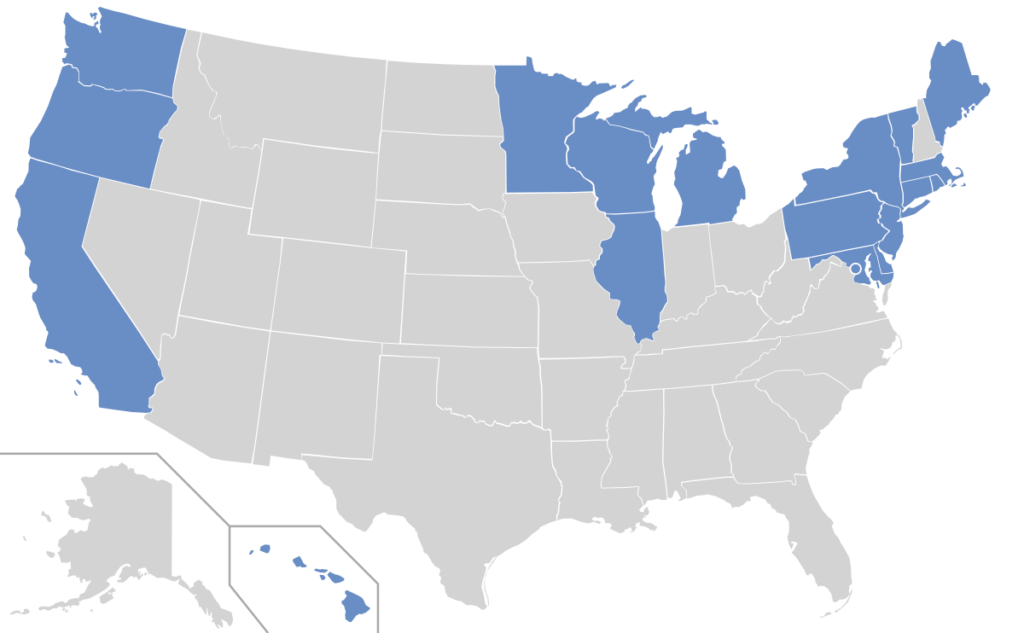
In the realm of American politics, the term “Blue Wall” has gained prominence, referring to a longstanding phenomenon where certain states consistently vote in favor of the Democratic Party. This political stronghold is a crucial aspect of the electoral landscape and has significant implications for national elections. Examining the Blue Wall provides insights into the historical, demographic, and socio-economic factors that contribute to the formation and sustenance of this political phenomenon.
The Historical Roots of the Blue Wall
The roots of the Blue Wall can be traced back to historical shifts in political affiliations, particularly during the mid-20th century. States in the industrial Midwest, such as Michigan, Wisconsin, and Pennsylvania, played a pivotal role in Democratic victories during the New Deal era under President Franklin D. Roosevelt. These states developed strong ties to the Democratic Party due to its pro-labor stance and policies that resonated with the working-class population.
The significance of the Blue Wall solidified during subsequent decades, with these states consistently delivering Democratic victories. This consistency became particularly evident in presidential elections, as these states formed a reliable bloc for Democratic candidates, reinforcing the notion of a Blue Wall.
Demographic and Socio-Economic Factors
The demographic and socio-economic composition of the Blue Wall states plays a crucial role in understanding the phenomenon. These states often have a substantial urban and industrial presence, with diverse populations that include working-class citizens, minorities, and unionized workers. The Democratic Party’s emphasis on social justice, workers’ rights, and inclusivity aligns with the concerns of these demographics, fostering a sense of loyalty and support.
Moreover, the Blue Wall states have experienced economic shifts over the years, transitioning from manufacturing-centric economies to service and technology-driven landscapes. The Democratic Party’s adaptability to these changes, coupled with its focus on education, healthcare, and social welfare, has helped maintain its stronghold in these regions.
Political Landscape and Gerrymandering
The Blue Wall phenomenon is also intertwined with the political landscape and the impact of gerrymandering. In many of these states, Democratic strongholds are strategically distributed, creating congressional districts that heavily favor the party. This gerrymandering, although not exclusive to the Democratic Party, has contributed to the resilience of the Blue Wall by concentrating Democratic votes in key areas.
However, it is essential to note that the Blue Wall is not impervious to change. In recent years, some states within this Democratic stronghold have shown signs of shifting political allegiances, prompting a reevaluation of the term’s relevance.
The Evolution of the Blue Wall in Recent Elections
The 2016 presidential election brought a seismic shift to the Blue Wall, challenging the notion of its invincibility. Donald Trump’s victory in traditionally Democratic strongholds like Michigan, Wisconsin, and Pennsylvania surprised many political analysts. This unexpected turn of events led to a reassessment of the Blue Wall phenomenon, with some questioning its continued relevance in a rapidly changing political landscape.
The 2020 election, however, showcased the resilience of the Blue Wall. Democratic candidate Joe Biden successfully reclaimed these states, reaffirming their historical allegiance to the Democratic Party. The election highlighted the dynamic nature of the Blue Wall, demonstrating that while shifts may occur, the underlying factors binding these states to the Democratic Party persist.
Conclusion
The Blue Wall phenomenon in American politics is a complex and multifaceted aspect of the electoral landscape. Rooted in historical ties, demographic composition, and socio-economic factors, the Blue Wall represents a significant stronghold for the Democratic Party. While challenges and shifts have emerged in recent elections, the 2020 results underscore the enduring nature of this phenomenon.
Understanding the Blue Wall requires a nuanced analysis of its historical development, the diverse composition of its states, and the impact of political and economic changes. As American politics continue to evolve, the Blue Wall remains a crucial element shaping the electoral map and influencing the outcomes of national elections.
